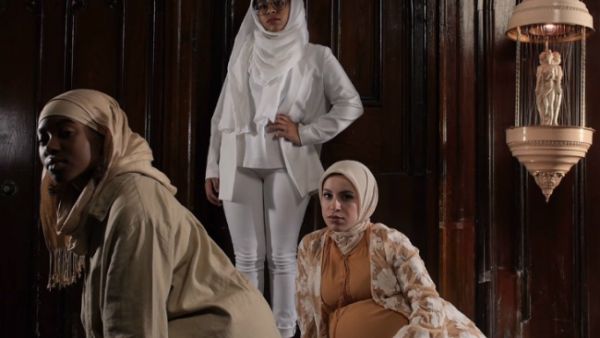I’ve noticed a bad habit in the young Muslim community:
Out of all the hate that Muslim figures get, the largest percentage seems to come from the Muslim community itself
Whether it’s Mohammad Tawhidi, Linda Sarsour, or even Fouseytube, Muslims just can’t seem to establish a clear and agreed upon role model. This is due in part to “Muslim community” itself being a misnomer: there’s no clear, monolithic identity to represent. But the point stands: there’s no figure that a majority of young Muslims can point to.
But one Muslim in particular seems to be breaking that mold.
Her name is Mona Haydar.
As her website says, Mona is a “rapper, poet, activist, practitioner of Permaculture, devotee, mountain girl, solar power lover, and a tireless God-enthusiast.” A bit of an eclectic, then. Plus a penchant for creativity.
More recently, Mona has been publishing hip-hop music videos to challenge the status quo. She addresses women’s rights, female identity, and Muslim identity. She has released only two videos to date. But they are two videos with high impact, and they’re well thought-out.
The first video — “Wrap My Hijab”:
The first thought in my mind when I experienced “Wrap My Hijab” was this:
“Holy crap. Hamdilla. Finally. She has the message. And damn, she’s really abstract. She is going to be around for a while.”
Audio alone, WMH is an excellent hip hop song. Flow, delivery, production, message. As a hip hop enthusiast and a student for a couple of decades now, I was impressed with the sound of this record. Mona, I just wished you put the production credits in the YouTube description because the beat maker for this was dope.
Besides being a great aesthetic for a modern day Muslim, the video was a perfect strategy. From the dancers, to the colors, to the outfits, all the way to those mystery-like poses (yeah, Mona, I caught that), this video is a number #1 attention-grabber. I watched it repeatedly back in March, and predicted it would go viral within less than a month. I was right.
The second video — “Dog”:
Compared to WMH, “Dog” is much more aggressive. In “Dog,” Mona is expressing her reaction to her first release, how she is handling the momentum of her debut as a rapper, but, more particularly, the backlash she has received from critics. After WMH, Mona has received comments like:
“Music is haram.”
“Hijabis shouldn’t be rapping.”
“This is not modest.”
And plenty more.
In my opinion, the audience saying this is either not well-versed in the history and culture of Islam, or simply very conservative. Either way, it appears like the feedback got to Mona, as it would with anybody who acquires fame in a quick amount of time and is forced to deal with controversy. But I think she’s smart, because she used it to her advantage. Mona is utilizing the power of rap music to respond to any feedback, be it positive or negative.
On the hook, or chorus, of this record, Mona features Jackie Cruz. If you don’t know Jackie Cruz, she’s an actress on the hit Netflix show Orange is the New Black, which just released its fifth season. Again, Mona’s strategy was well thought-out with this video as well.
If you are not familiar with Orange is the New Black, it’s a show about female inmates that caters to a strong feminist audience. Marketing-wise for Mona, featuring Jackie is brilliant because Jackie’s fans from OITNB are going to watch this and, if all goes, ultimately become Mona’s fans.
Overall, I think the Muslim world needs Mona Haydar because she knows how to handle controversy. Adopting feelings into music is the mark of an artist. And she picked the perfect medium: hip-hop.
Bless you, Mona. Your movement is definitely Muslim. And definitely dope.
Written by Yazeed Makhlouf







